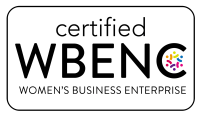When it comes to rolling out a new strategy, there’s one critical audience that often gets overlooked: employees. Yet these are the people who can make or break your brand’s success in the market.
It’s a common blind spot. When you’re immersed in strategic planning sessions day in and day out, it’s easy to forget that most of your organization hasn’t been part of the conversation. That brilliant strategy you’ve been refining for months? Your employees might be hearing about it at the same time as the rest of the world. The exciting direction that’s so obvious to you? It might feel confusing or concerning to employees who weren’t part of those discussions.
Why Are Employees Your Most Important Marketing Asset?
Your employees are your first and most authentic brand ambassadors. When they understand and believe in your purpose, they become powerful advocates for your organization. But when they’re left out of the “news cycle,” they feel undervalued. And that can affect everything from recruitment and retention to the quality of your products and services.
An effective employee engagement strategy ensures everyone rows in the same direction, helps geographically dispersed teams feel connected, and guarantees your organization speaks with one voice about your mission and goals. Most importantly, it builds genuine excitement around your brand’s direction.
How Do You Build an Effective Internal Marketing Strategy?
It takes more than a one-off email from the CEO to get employees on board. Internal communications strategies require the same intentional approach as any marketing effort—structured, cohesive, and sustained messaging tailored to your audience. At the highest level, your strategy should:
1. Start with Clear Objectives
What do you want to accomplish? Are you building excitement for a new direction? Rallying employees around a shared mission following an acquisition? Improving retention or aligning individual efforts with company goals? Define your purpose before you plan your approach.
2. Consider Your Workforce
What’s the best way to reach your employees? You likely can’t use the same tools for field teams and plant workers as you can for office staff. You may even need to calibrate your messaging for different audiences—just as you would for an external marketing strategy.
3. Account for Your Resources
What budget and time can you realistically commit? Most small- and mid-sized organizations don’t have unlimited budgets, but you can still run an effective communications strategy with a solid plan. The key is sustainability—if you promise monthly updates or quarterly town halls, ensure you can commit the time to follow through.
4. Define Your Call to Action
What actions do you want employees to take? Unlike external marketing, this may be aspirational or philosophical rather than transactional. Think about the behaviors and attitudes you want to foster and weave that into your messaging.
5. Determine Scope and Success Metrics
How will you measure success? Will this be a time-limited campaign or ongoing strategy? Building measurement criteria upfront helps you adapt as needed and validates that your internal communications strategy is driving the outcomes you need.
Case Study: How Does Internal Communications Strategy Work in Practice?
Matandy Steel & Metal Products exemplifies how an intentional internal communications strategy can transform company culture. This family-owned Ohio steel service center retained TMC in 2020 to develop a strategic marketing approach for their commoditized market. In addition to improving their brand identity and awareness, Matandy requested assistance with rallying employees around the new strategic direction.
TMC developed the ‘Just OWN IT’ campaign—a comprehensive internal branding initiative putting employees front and center. Through inspiring video and imagery, employees became the heroes of the Matandy story, building pride and reinforcing their role in the company’s “True as Steel” promise. Shop-floor banners, digital signage, a quarterly newsletter, and similar strategies carried the imagery and messaging forward.
When Matandy later transitioned to an Employee Stock Ownership Plan (ESOP), we partnered with leadership to build excitement around the announcement—demonstrating how internal communications strategy evolves with organizational changes.
Ready to Transform Your Internal Communications?
Getting ready to launch a new marketing strategy or undergo rebranding? Don’t overlook your most important audience. Your employees deserve the same strategic attention as your external prospects—and your business results depend on it.
We don’t just hand you a strategy and wish you luck. The Marketing Collective delivers clear, executable internal communications plans and provides hands-on support to ensure seamless execution—from initial strategy development through day-to-day implementation. Whether you need full strategic leadership or executional firepower to finally move key projects forward, we’ll integrate with your team to turn your employees into your most powerful marketing asset.
Contact us to get started.

About Nicole Ball
Client Strategist
About Nicole Ball
Client Strategist
Nicole Ball is a strategic and creative marketing professional with over 25 years of experience helping businesses grow through insight-driven strategies, brand storytelling, and integrated marketing. She partners with executive teams across industries to connect vision with execution, simplify the complex, and turn ideas into action. Nicole brings clarity, creativity, and measurable results to every initiative—whether it’s launching a new brand, leading a campaign, or strengthening an existing one.

